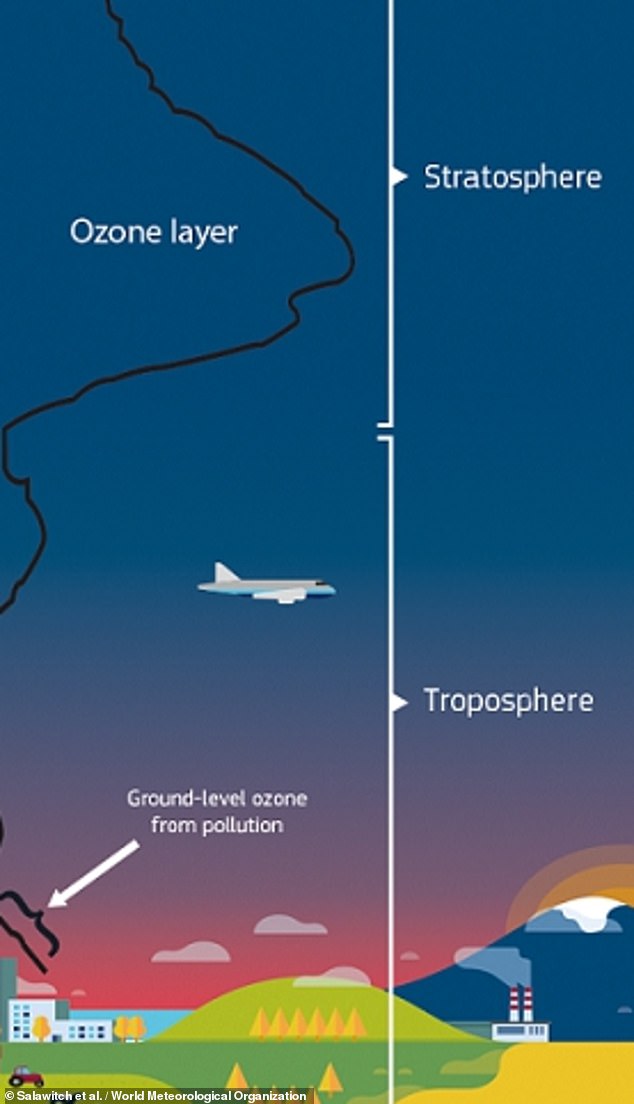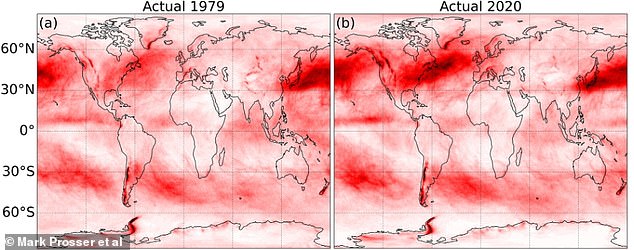Severe turbulence will get WORSE thanks to climate change, scientists warn as one passenger is killed and several others injured on a British flight to Singapore
Airline passengers are usually told that turbulence is nothing to worry about, but as Singapore flight SQ321 showed on Tuesday, it can be fatal.
A 73-year-old British man, Geoff Kitchen, died of a suspected heart attack, while several others suffered serious injuries on board the plane, which encountered severe turbulence at about 37,000 feet.
Passengers somersaulted, fainted and left the cabin in ‘pools of blood’ as it suddenly plunged some 6,000 feet within minutes.
Now scientists say climate change is worsening turbulence for planes – resulting in sudden and more violent movements and a greater risk of fatalities.
Speaking to MailOnline, Isabel Smith, a turbulence researcher at the University of Reading’s department of meteorology, warned that global warming is making jet streams – the narrow currents of fast-moving air that planes fly past to get a speed boost – ‘more chaotic ‘ makes.
Airport officials stand by the Singapore Airlines plane for flight SQ321, parked on the tarmac after an emergency landing at Suvarnabhumi International Airport, in Bangkok, Thailand, May 22, 2024
‘The amount of turbulence is closely related to the speed and velocity of the jet streams, the fast-flowing bands of wind that propagate around the world,’ she told MailOnline.
‘As the jet speed increases, the instability of the jet increases and the airflow becomes more chaotic, leading to more turbulence.’
A certain type of turbulence, called clear-air turbulence (CAT), is thought to have affected SQ321.
CAT is difficult to observe ahead of an aircraft’s trajectory using remote sensing methods and is challenging for aviation meteorologists to predict before it occurs.
‘Clear air turbulence (CAT) is generated as a result of gusts of wind and thus has a strong link with jet streams,’ said Dr. Smith to MailOnline.
‘Global warming refers to the rapid warming of the lowest layer of the atmosphere in which we live, the troposphere.
‘There are different layers in the atmosphere and the layer above the troposphere is the stratosphere.
‘The increase in greenhouse gases traps heat in the troposphere, which is normally emitted to the stratosphere.

The troposphere is where people live and weather exists, with the lower layer extending for about six miles
‘This creates a strong temperature difference vertically through the atmosphere.
‘A stronger vertical temperature gradient will lead to a stronger and more chaotic jet stream.
“As the jet streams strengthen, it becomes more chaotic and unstable and the number of CAT encounters increases.”
CAT is often described as ‘invisible’ because there are no visual cues, such as clouds, that can help experts predict dangerous areas.
“The biggest problem (with CAT) is that you can’t see it,” said Ramalingam Saravanan, a professor in the Department of Atmospheric Sciences at Texas A&M University, who was not involved in the study.
“I think pilots are best informed when another pilot has flown through and calls back to let them know the location.
‘You can try to predict it statistically, but you can’t predict it on an individual case basis because it’s a random process and the sky looks clear and harmless – hence the name.’
Researchers from the University of Reading published a paper Last year it emerged that severe turbulence has increased by 55 percent in four decades.
Analyzing CAT trends worldwide between 1979 and 2020, the experts found “clear evidence” of a large increase in CAT in aircraft at cruising altitude.
Specifically, they found that the largest increases in CAT occurred over the US and the North Atlantic Ocean – both busy flying areas.

Researchers from the University of Reading found that severe turbulence has increased by percent over the past four decades. Shown: the annual average probability of encountering moderate or greater clear-sky turbulence (CAT) in (a) the year 1979 and (b) the year 2020 (dark red areas indicate a higher probability)

Passengers somersaulted, fainted and left the cabin in “pools of blood” as they were tossed around by turbulence. In the photo: bloodied personnel on board the SQ321

A 73-year-old British man, Geoff Kitchen, died of a suspected heart attack and several others suffered serious injuries on board the plane, which encountered severe turbulence at about 37,000 feet.
At a typical point over the North Atlantic, the total annual duration of severe turbulence has increased by 55 percent, from 17.7 hours in 1979 to 27.4 hours in 2020, the study found.
Moderate turbulence increased 37 percent from 70.0 to 96.1 hours, and light turbulence increased 17 percent from 466.5 to 546.8 hours.
Although the US and the North Atlantic experienced the largest increases, the experts noted that other busy flight paths over Europe, the Middle East and the South Atlantic also saw significant increases in turbulence.
Interestingly, there is a greater increase in CAT in the Northern Hemisphere than in the Southern Hemisphere, which ‘warrants further investigation’.
According to the team, their research represents “the best evidence yet” that air turbulence has increased in recent decades, in line with increases in global warming.
Meanwhile, a Study from 2017 calculated that climate change will significantly increase the amount of severe turbulence worldwide sometime between the 2050s and 2080s.
